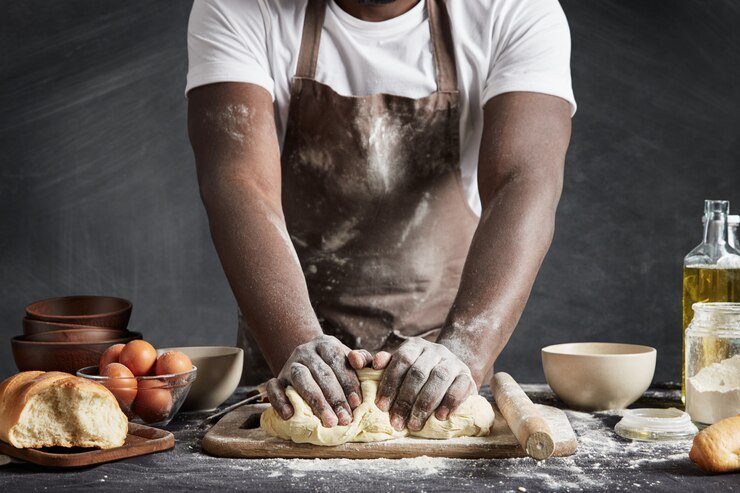Cooking Memories Carved in Stone
Have you ever sat in a kitchen where the rhythmic sound of grinding filled the air?
Not the electric hum of a blender, but the steady scrape of stone against stone. That sound, for many African families, is the soundtrack of tradition. The African grinding stone cooking practice is more than a method; it’s an heirloom, a living bridge between past and present. Archaeologists, travelers, and food historians have all marveled at how this simple tool shaped diets, ceremonies, and even community life.
Imagine a grandmother squatting on the ground, carefully crushing millet or maize on a flat stone while children watch eagerly, waiting for the meal. That image captures centuries of resilience, craft, and care.
Why African Grinding Stones Matter
At first glance, a grinding stone might look like nothing more than two rough rocks. But dig deeper, and you find layers of cultural meaning:
-
Survival Tool: Long before industrial mills, stones transformed raw grains into food.
-
Cultural Identity: Every region had its style, size, and method, reflecting local crops and traditions.
-
Ceremonial Role: Some grinding stones appear in weddings, harvest rituals, and ancestral offerings.
So, when we talk about African grinding stones, we’re really talking about how families cooked, how communities connected, and how traditions survived colonial disruption and modernization.
The Anatomy of the African Grinding Stone
An African grinding stone usually comes in two parts:
-
The lower stone (metate-like slab): Flat or slightly curved, serving as the base.
-
The upper stone (mano-like pestle): A smaller handheld stone used to grind, pound, or crush.
The technique varies. In some regions, women kneel and use forward pressure, sliding the top stone back and forth. In others, circular grinding dominates. This simple design, unchanged for millennia, made it possible to process sorghum, millet, cassava, and even spices.
A Tool That Tells Stories
Surprisingly, grinding stones weren’t only about cooking. Archaeologists have unearthed decorated stones engraved with symbols. Some were buried with women as grave goods, suggesting spiritual importance. Others carried wear marks that hint at daily use for decades. Each groove and smooth patch on a stone tells a story of meals shared, festivals celebrated, and generations raised.
In Ethiopia, grinding stones still prepare injera batter from teff. In Nigeria, they’re used to make pepper pastes that no machine can quite replicate. And in rural Ghana, women say the stone preserves flavors better than any blender.
Table: Grinding Stones Across Africa
Here’s a comparison of how different regions use grinding stones in cooking:
| Region / Country | Common Crops Ground | Typical Dish Prepared | Cultural Note |
|---|---|---|---|
| Ethiopia | Teff | Injera flatbread | Grinding is often communal before big festivals. |
| Nigeria | Peppers, grains | Stews & sauces | Believed to release a richer aroma than machines. |
| Ghana | Maize, millet | Koko (porridge) | Stones passed down as family heirlooms. |
| Sudan | Sorghum, sesame | Kisra bread | Grinding stones are used in both daily cooking and rituals. |
| Kenya | Maize | Ugali | Still used in rural homes despite the availability of mills. |
The Rhythm of Daily Life
Think about how much time it takes to grind enough flour for a family. Hours of labor, sweat, and patience. In traditional African villages, this wasn’t just work; it was a form of social bonding. Women gathered, shared stories, and passed knowledge down to younger girls while grinding together.
That rhythm became part of life’s soundtrack. In fact, some African proverbs even refer to grinding stones as symbols of persistence and endurance.
Grinding Stones in Ceremonies
Certain communities reserved special stones for rituals. For instance:
-
In some Nigerian weddings, grinding peppers together symbolizes unity.
-
Ethiopian festivals often include communal grinding as a way to bless the food.
-
Among some tribes, the grinding stone represented fertility, as it was tied to nourishment and motherhood.
So, beyond feeding bellies, grinding stones nourished cultural identity.
Science Meets Tradition
Modern researchers confirm what villagers already knew: the grinding stone extracts deeper flavors. Studies comparing stone-ground grains with industrially milled grains found higher fiber retention and richer textures. Smithsonian and National Geographic reports also highlight how traditional tools preserve biodiversity by supporting heritage crops like teff, millet, and sorghum.
This shows that what looks “old-fashioned” often hides scientific wisdom.
Why Not Just Use a Blender?
You might wonder, why cling to stone when machines are faster? Here’s the catch:
-
Flavor Difference: Slow grinding avoids overheating, which can dull flavors.
-
Cultural Connection: Machines can’t replace rituals tied to grinding.
-
Durability: A stone lasts generations; a blender breaks in a few years.
In many rural homes, even if there’s electricity, the grinding stone remains on the kitchen floor.
Challenges and Modern Shifts
Of course, not all is romantic. The labor is intense. Urbanization has shifted people toward mills and blenders. Some young Africans view grinding stones as outdated. Yet, interestingly, health food movements abroad now praise stone-ground flours as premium products. What’s fading in villages is being rediscovered in city health stores.
What This Really Means
When you step back, the African grinding stone isn’t just about cooking. It’s about resilience, memory, and identity. It’s proof that technology doesn’t always replace tradition—it sometimes circles back to it. Every scrape of stone on stone echoes centuries of survival, creativity, and flavor.
FAQs About African Grinding Stones
Q1: Are African grinding stones still used today?
Yes, especially in rural areas of Ethiopia, Nigeria, Ghana, and Sudan. Many urban families keep them for traditional dishes.
Q2: What foods are commonly prepared with them?
Millet, maize, sorghum, cassava, peppers, and spices—usually turned into breads, porridges, and sauces.
Q3: Why do some people prefer them over machines?
They say the stone brings out flavors better, keeps texture authentic, and connects them to cultural roots.



